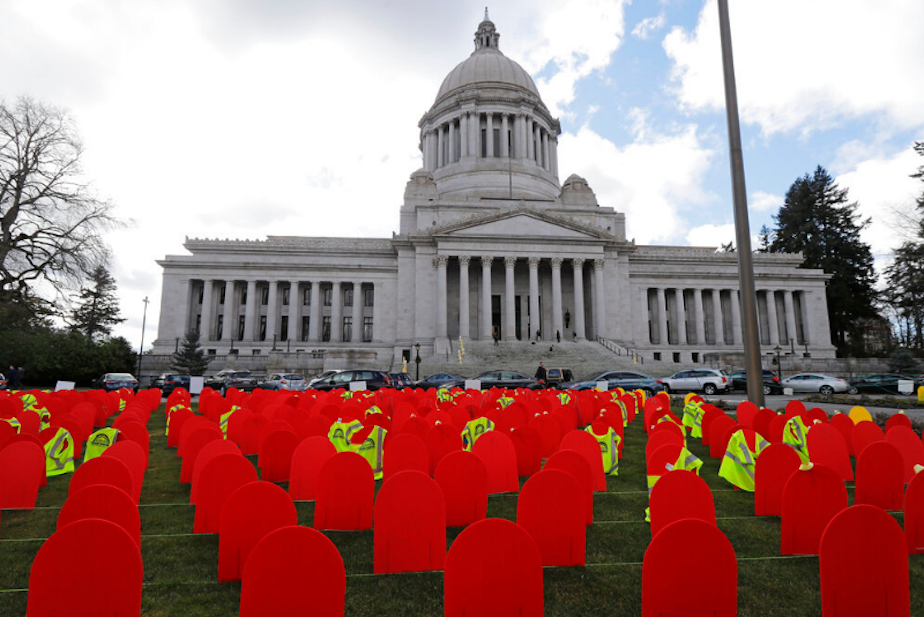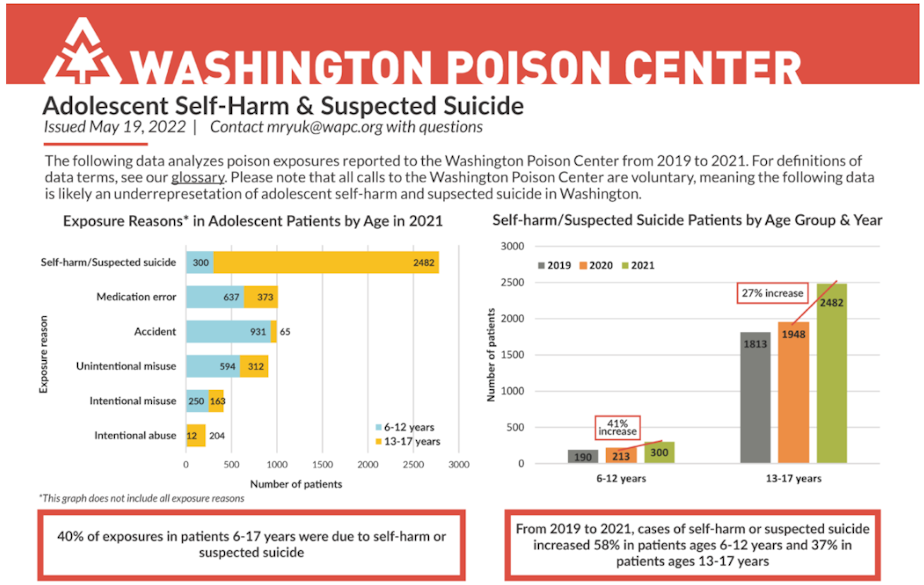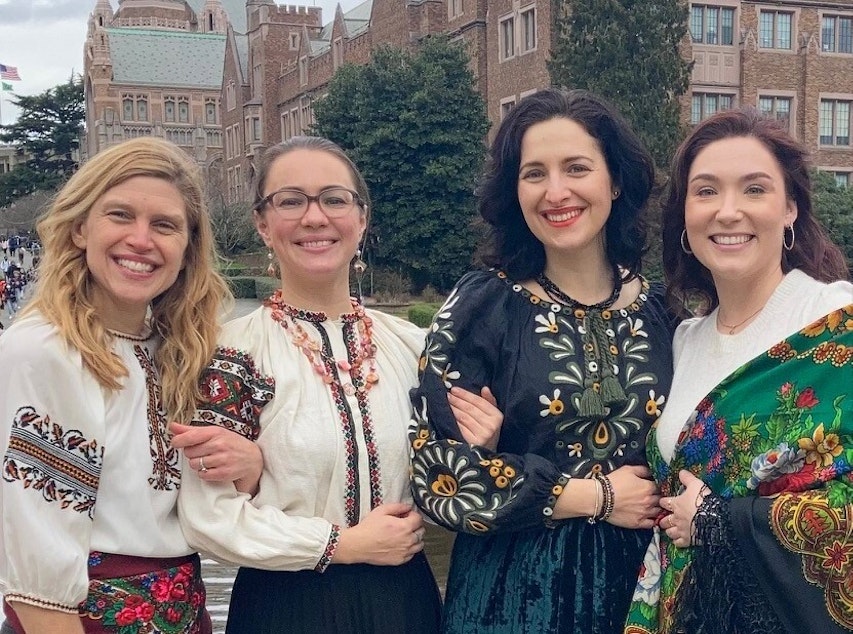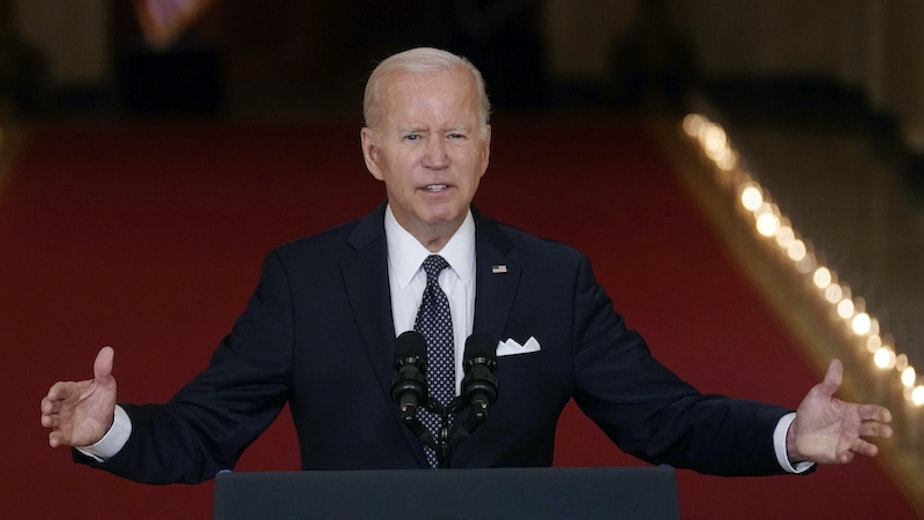Youth suicide attempts rise in Washington: Today So Far

Today's newsletter is going to discuss the issue of suicide. Be aware of that upfront. If you are interested in some information around this issue, KUOW's Kim Malcolm recently interviewed an expert on this, and has provided some resources for your consideration.
This post originally appeared in KUOW's Today So Far newsletter for June 3, 2022.
Kurt Cobain died when I was in sixth grade. We all know how. For many people back then, it was the first time suicide really entered their lives — through headlines. But the first time suicide really registered with me, when I learned what it really meant, was in eighth grade when the chair next to me went empty. Nobody saw it coming or knew why it happened. I knew him for less than a school year, but nonetheless, he was my buddy, a classroom crony. He was a 13-year-old goofball and a joyful presence from about 8 a.m. to 3 p.m., Monday through Friday. I imagine he was the same for others in our corner of the classroom. At home he was a son and a brother.
Today, he is a memory that still has the power to mess me up. I think that is the difference between headlines and when suicide is up close. I still love listening to Nirvana. But I have trouble opening up my middle school yearbook.
A lot of us will read the headline that our state is experiencing a dramatic increase in youth suicide attempts, and maybe that's as far as it goes. But more and more of Washington's youth will be feeling this issue. There has been a 37% increase in suicide and self harm among adolescents between 2019 to 2021. It's a recent spike in a much longer trend. It should also be noted that there are a lot more firearms around us these days. Suicide is the most common thing that America does with guns. And recently, suicides with firearms have increased more severely among youth.
I don't point all that out to be dramatic or scary. It's information worth being aware of.
"We're faced with a significant increase in risks and numbers," Dr. Kira Mauseth told KUOW's Kim Malcolm.
Dr. Mauseth is co-lead of the Behavioral Health Strike Team at Washington's Department of Health.
"It's something that parents and caregivers alike need to be aware of," Dr. Mauseth said. "We can work as community members to help support our youth right now, who are really going through a hard time."
There are a range of reasons that could be behind all this. Take your pick. Pandemic disruptions and isolation. Depression and anxiety. Dr. Mauseth points out an increased dependence on technology and external devices as coping mechanisms. There's probably something to that; the internet provides a rather warped version of reality.
All these years later, I wish I had some sort of astute wisdom to relay. All I can say is that it really sucks. Suicide is such a fallacious path, especially so early. It's like walking out of a movie after the first act, when the problem is established. You don't get to experience the progress, the intrigue, the unforeseen twists, and all the grand conclusions that only the unraveling of time can display. And side note, you don't get to see all those annoying classmates peak in high school and struggle to regain the past, which you get to travel beyond and have a far greater time at life than those years could ever offer.
Of course, that is a rather simplified metaphor for a complex issue. For my lack of practical information on this topic, Dr. Mauseth has provided KUOW with a few insights and resources for families.

AS SEEN ON KUOW

The founders of the Nashi Immigrants Health Board. As the war in Ukraine continues, refugees in the Seattle area are settling in and looking for health services. A local Ukrainian nonprofit is stepping up to help them navigate the complex U.S. health care system. (Courtesy of Tamara Cyhan-Cunitz)
DID YOU KNOW?
You've probably heard of the National Suicide Prevention Lifeline. But did you know they also have an online chat?
There's the Suicide Lifeline at 800-273-8255. There's also the Teen Link at 866-833-6546. But if talking on the phone isn't your thing, there is an option to chat online. You can also text to 741741 on your phone to talk. There are even options specific to the deaf or hard of hearing, and for veterans.
ALSO ON OUR MINDS

A somber President Joe Biden appealed to Congress Thursday to pass federal gun laws in the wake of mass shootings at an elementary school in Texas, a grocery store in Buffalo and a medical office in Tulsa.

